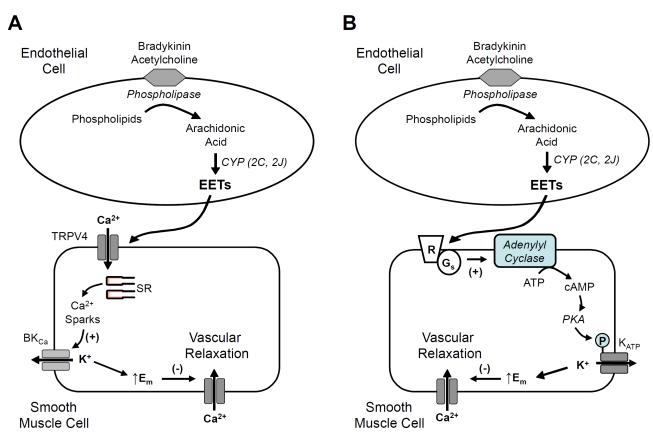Fig 4.
Pathway of EET synthesis and action in the vascular wall. EETs may hyperpolarize and relax vascular smooth muscle by two additional mechanisms: (A) EETs are released by the endothelium and activate TRPV4 channels on smooth muscle cells. The calcium (Ca) influx through TRPV4 channels promotes Ca sparks from the endoplasmic reticulum activating large conductance, Ca-activated K (BKCa) channels. This promotes K efflux, an increase in the membrane potential (Em) or hyperpolarization and relaxation. (B) EETs are released by the endothelium and stimulate cyclic AMP production through activation of adenylyl cyclase by the guanine nucleotide binding protein Gαs. Protein kinase (PKA) is activated by cyclic AMP leading to phosphorylation and activation of ATP-sensitive potassium channels. This promotes hyperpolarization and relaxation

